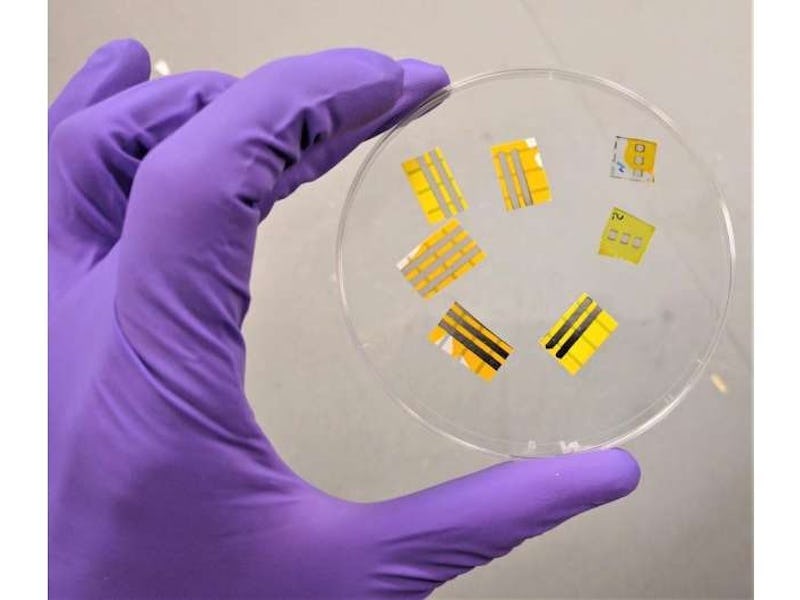Tech
New light-emitting tattoos could warn wearers of health problems
Tattoo electronics is a fast-growing field of research.

Scientists at the University College of London (UCL) and the Italian Institute of Technology (IIT) have created temporary tattoos embedded with OLED lights like the ones used to illuminate TVs and smartphones. The technology could potentially be combined with other sensors to create cheap and effective medical monitors. A new paper describing the process of making the tattoos was published in Advanced Electronic Materials.
Proof of concept — According to the researchers, the tattoos are printed onto temporary tattoo paper and then transferred to a new surface by pressing it onto the surface and dabbing with water. The diodes emit light when an electric field is applied.
Before you rush to get a light-up tattoo, the technology is still a proof-of-concept. The tattoos degrade pretty quickly from contact with air, and the researchers have not yet integrated them with a battery.
Potential applications — The technology could have applications in healthcare if, for instance, it were combined with a sweat sensor to provide real-time monitoring of hydration levels and emit light when a person becomes dehydrated. Or the researchers suggest it could be used to provide light-sensitive therapies to cancer patients. In food, OLEDs could be printed on fruit to signal when it's passed its expiry date. Maybe you could put your phone number on your child before they lose you at Disneyland. The possibilities are endless.
The great thing about OLEDs is that they are easily printable from liquid solvents, and can be used on flexible surfaces. Creating very small OLEDs allowed for this new breakthrough — the device is just 2.3 micrometers thick. Once the team had built the OLED tattoos, they demonstrated them emitting green light onto a plane of glass, a plastic bottle, an orange, and paper packaging.
Several years ago, a company called LogicInk introduced a UV-sensing temporary tattoo that warns of excessive sun exposure. The tattoo looks like a ring and changes to a pink color as UV exposure accumulates throughout the day.
Tattoo electronics has become a fast-growing field of research in part because the technology has come down dramatically in cost. As with 3D printing, designs of different shapes and sizes can be created without the need to create a new manufacturing process. The OLED tattoos are also easy to apply, and use and wash off with soap and water.